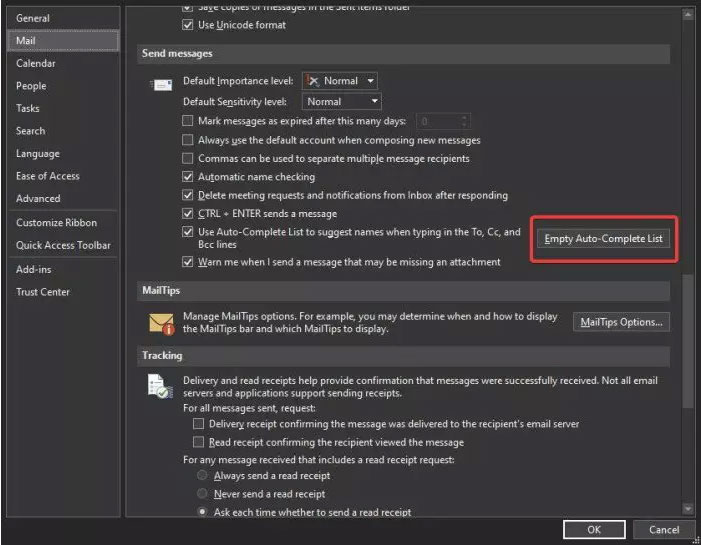

Outlook loads the autocomplete stream whenever an item with addressing functionality is initialized. dat file is only a cache and is not used to write back to the delivery store when the user exits Outlook 2010 or Outlook 2013.

dat file located in %USERPROFILE%\AppData\Local\Microsoft\Outlook\RoamCache. The autocomplete data may be temporarily cached in an autocomplete. The autocomplete stream is stored on this message in the PR_ROAMING_BINARYSTREAM property ( PidTagRoamingBinary Canonical Property). This hidden message has a message class and subject of. Outlook 2010 or Outlook 2013 reads the autocomplete stream from a message in the Associated Contents table of the Inbox of the mail account's delivery store. For more information about the nickname cache binary file format, see Outlook 2003/2007 NK2 File Format and Developer Guidelines. nk2 file is stored in %APPDATA%\Microsoft\Outlook. For example, if the default profile of "outlook" is used, the file will be called "outlook.nk2". The means of storing the autocomplete data differs between Outlook 2007 and Outlook 2010 or Outlook 2013 as follows:įor Outlook 2007, the autocomplete stream is stored in a file with the same name as the profile and an extension of. Saving changes to the data in the autocomplete stream Outlook interacts with the autocomplete stream in two ways: When the To, Cc, or Bcc edit boxes are accessed on a message, the autocomplete stream is loaded and the list of user names is displayed. Therefore, applications that make changes to the autocomplete stream within Outlook 2007 can be written using any programming language. There are no dependencies on the Outlook 2007 object model or MAPI APIs.
:max_bytes(150000):strip_icc()/delete-outlooks-add-cache-file-1173820-4-25d725fdaf2646f2a928e3772cccb1ce.png)
The PropertyAccessor object is exposed in the Outlook 2010 or Outlook 2013 object models. This topic describes how Outlook 2007, Outlook 2010, and Outlook 2013 interact with the autocomplete stream and also discusses the binary format of the file and the recommended ways for interacting with the autocomplete stream.įor applications that interact with Outlook 2010 or Outlook 2013, the autocomplete stream is stored as a MAPI property and can be modified using the MAPI or the PropertyAccessor object of the message. Click Finish.Microsoft Office Outlook 2007, Microsoft Outlook 2010, and Microsoft Outlook 2013 interact with the nickname cache, also known as the "autocomplete stream." The autocomplete stream is where Outlook persists the autocomplete list, which is the list of names that displays in the To, Cc, and Bcc edit boxes while a user is composing an email. The final window will confirm that the change was completed successfully.You will see a pop-up window reminding you that the changes won't take effect until you restart outlook.Under the Offline Settings header in the Change Account window, uncheck the box next to Use Cached Exchange Mode and then click Next.From the Account Settings double click on your email address.Select the Account Settings drop down menu and then click on the Account Settings options.Open Outlook, and from the tabs at the top click on File.Turning Off Cached Exchange Mode in Outlook These instructions are for Outlook 2016, but are also applicable to Outlook 2019. If you are experiencing any of these issues, follow the instructions below to turn off Cached Exchange Mode. The program will be slower to process changes in the Global Address List, or will be unable to find certain emails when you search for them. This cache can sometimes hinder the performance of Outlook. When you set up your mail profile in Outlook 2016 -2019, some of your messages and the address book are cached (stored locally on your computer) by default so that Outlook can retrieve the information quicker.


 0 kommentar(er)
0 kommentar(er)
